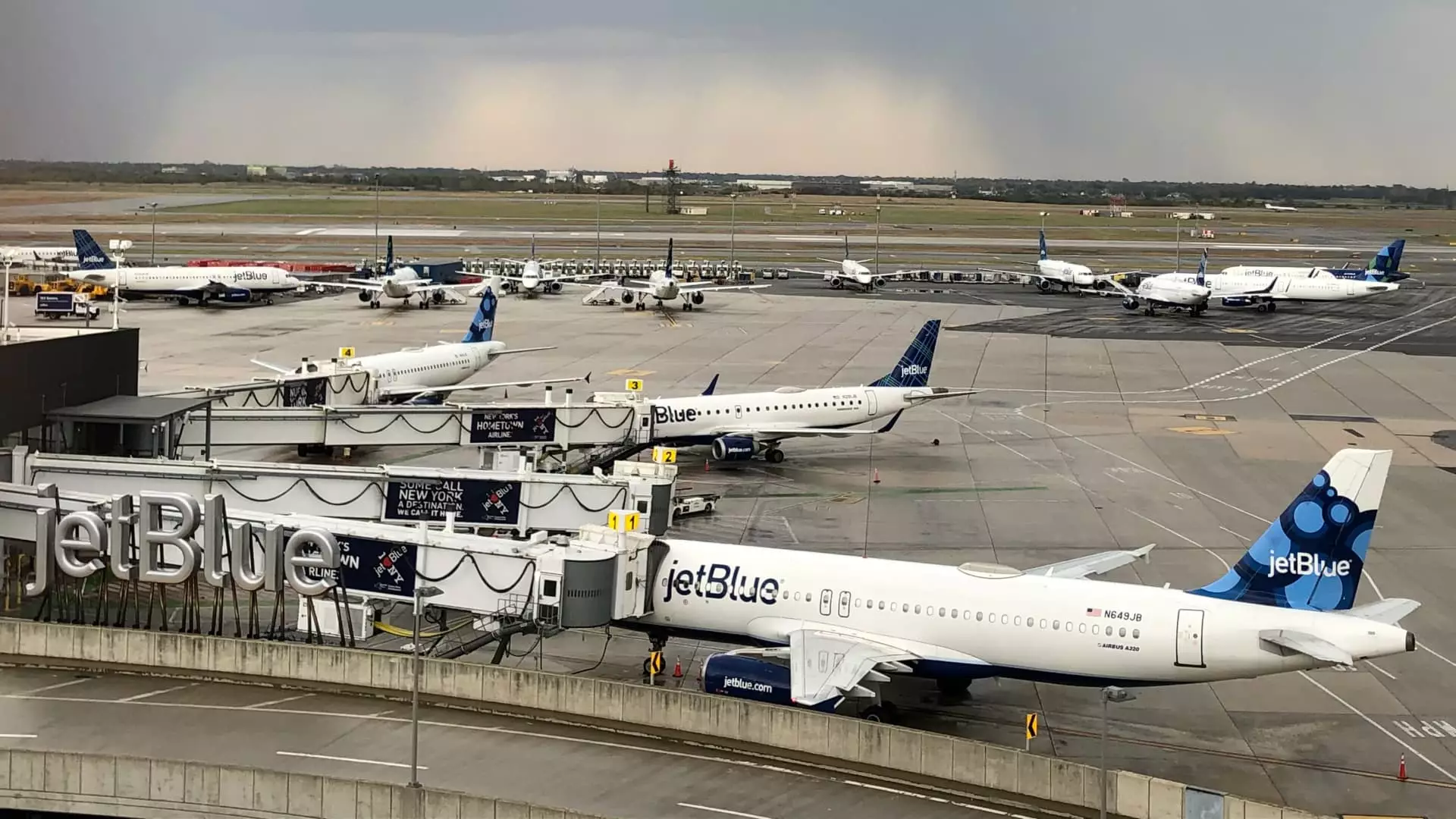In a bold move that marks a significant evolution for JetBlue Airways, the low-cost carrier is set to introduce its first airport lounges in its over 20-year history. This pivot not only symbolizes JetBlue’s ambition to attract a clientele that is willing to spend more but also reflects a broader trend in the airline industry aimed at enhancing passenger experience and loyalty.
JetBlue’s decision to launch lounges at New York’s John F. Kennedy International Airport and Boston Logan International Airport is a strategic attempt to upscale its image and service offerings. Set to open late next year and shortly after, respectively, these lounges will provide a refuge for the airline’s premium segments, including passengers flying in its exclusive Mint business class and select high-tier loyalty members. By appealing to both trans-Atlantic travelers and affluent clientele, JetBlue aims not only to enhance customer satisfaction but also to cultivate a more loyal customer base that chooses JetBlue over competitors.
The lounges promise to blend comfort and functionality, featuring amenities such as cocktail bars, espresso stations, and workspace areas. Jayne O’Brien, JetBlue’s head of marketing and customer support, noted that the aim is to create an inviting environment that caters to both relaxation and productivity, setting a foundation for JetBlue’s expansion into premium services.
As JetBlue enters the lounge scene, it finds itself in a highly competitive landscape. Major carriers like Delta, American Airlines, and United have already carved out significant market share among high-spending travelers with similar premium offerings. The recent renovations of these airlines’ lounges have not only improved their aesthetic appeal but have also served to reinforce their commitment to customer satisfaction within the high-end travel market. Delta, for instance, recently unveiled its exclusive Delta One lounge at JFK, further illustrating the pressures on JetBlue to deliver an experience that meets or exceeds customer expectations.
The evolution of airport lounges parallels developments in the credit card space, where financial institutions like American Express and Chase have recognized the lucrative potential of providing exclusive access to lounges as a way to attract affluent customers. JetBlue is also stepping into this arena, having announced plans to introduce a premium credit card in partnership with Barclays. This step signifies JetBlue’s commitment to competing with legacy airlines and capturing revenue through lucrative credit partnerships.
Despite the aggressive expansion into premium services, JetBlue is simultaneously navigating the financial realities of the aviation industry. To stabilize and improve profitability, the airline has been forced to make difficult decisions, such as deferring new Airbus aircraft deliveries and cutting routes. Such moves highlight the delicate balancing act JetBlue must perform: pursuing growth through enhanced services while managing costs effectively.
The limited access to the new lounges underscores JetBlue’s strategy of cautious expansion. By initially restricting entrance to a select group of travelers, the airline aims to prevent overcrowding and ensure a more pleasant experience for lounge patrons—a common complaint among frequent flyers at other airlines’ lounges. O’Brien’s approach of being “thoughtful” about the winged journey towards a more premium service model demonstrates a sensible mindset that recognizes the importance of brand reputation and customer service.
The airport lounge initiative represents only the beginning of JetBlue’s premium offerings. Speculation surrounding potential enhancements such as a mini Mint cabin suggests that JetBlue is seriously considering how to elevate its product. This innovation aligns with industry trends where airlines are increasingly focusing on differentiated cabin experiences that cater to varying levels of passenger service.
As Southwest Airlines and other budget carriers also look to enter the premium service game, JetBlue’s movements will serve as a litmus test for how effectively low-cost airlines can compete while innovating within a space traditionally dominated by full-service carriers.
JetBlue’s foray into airport lounges represents a transformative milestone in its operational philosophy, moving towards a model that values premium experiences alongside cost-effectiveness. The development of these lounges, compliments of credit offerings, and strategic market positioning reveals JetBlue’s commitment to evolving its service model to capture a new demographic of travelers. As the airline industry continues to undergo significant changes, JetBlue’s steps will be closely monitored—not just for their impact on the airline’s bottom line but also for their effect on how budget airlines redefine luxury air travel in the years to come.


Leave a Reply